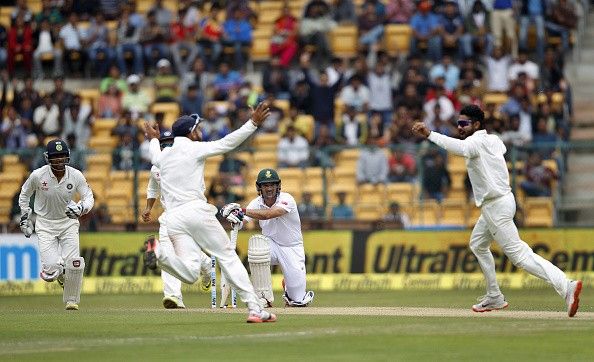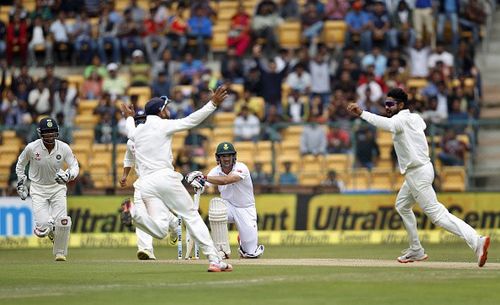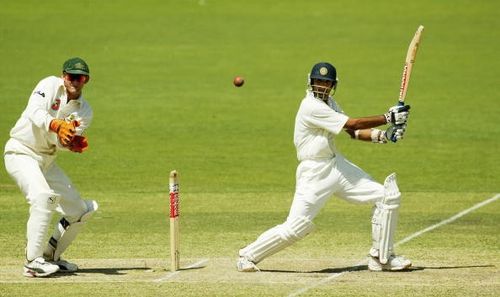
Why teams should play to their strengths

As umpire Ian Gould uttered the ceremonious call for “play” on the second day of the third Test between India and South Africa at Nagpur, Ravichandran Ashwin was all set to begin his carnage with an unsteady Dean Elgar facing the rookie off-spinner.
Ashwin tossed the ball up, which he has been doing more frequently since his rejuvenation, it looped and dipped in the air before pitching at the good length area. Elgar, having deciphered the trajectory in the air, followed the path of the ball and came forward confidently with his front foot to the pitch of the ball.
The ball pitched and with a tiny puff of the dust, took a snake-like turn away from him missing his bat from a minute distance and leaving him baffled and astonished. In the next one hour, the whole balance of the match tilted in India’s favor as the touring side folded at a paltry sum of 79 runs in their first innings. Ashwin, with his menacing turn and unpredictable guile, scalped another five-for and claimed his dominance in the match.
Very soon, the clamor for the pitch began and the debate started to make noise around all the cricketing circles’. The pitch, which was coarse from day one and had the gorges opened on day two, evoked danger for the batsmen and merriment for the spin bowlers.
It turned ferociously, bounced vehemently and with every delivery hitting the soil, it showed signs of further crumbling as the visitors found themselves in danger of succumbing the series to India with one match still to go.
Looking at the whole series, the 22-yard highway - a rugged one with tiny potholes conjuring the magic for bowlers’- has been debated by many greats of the game since it had an important role to play in every move in the gamble.
The pitch at Mohali started turning from day two and the one at Bangalore was a bit slow and moist, the one offered in Nagpur was dry and looked over-prepared from day one with 12 wickets falling on the opening day.
Australian cricketers Glenn Maxwell and Mathew Hayden were not happy with the pitch offered in Nagpur and tweeted their displeasure claiming it to be “diabolical” and “over-prepared and uneven for batsmen”. Very soon Michael Vaughn and Jimmy Neesham chipped in with their views calling it an unfair contest between bat and ball and twitter was flooded with lot more views on the 22-yard dry turner strip.
If we take back our memory down the lane to the year 2013, India were welcomed to combat a greener field at Johannesburg which looked a tailor-made pitch for the hosts’ destructive pace battery. Though it is not tit-for-tat kind of response from India but to whine about the pitch means taking the credit away from a necromancer on Indian soil - R Ashwin.
Why playing to their strength is not bad?
Obviously, because it brings more diversity into the game. If authorities chart out a standard set of rules for preparing a Test cricket pitch or prohibit nations from playing to their strengths, the remaining juice of the game would be flushed away slowly.
For an Indian cricketer, a hundred in England or Australia or South Africa gratifies him much more than a double hundred in India because these are the battlefields where their skills are tested.
Indians are not prone to green fields and if someone score runs or take wickets there and if the side wins a game away from the home, it gets itched in fans memories.

Also, because it allows Test Cricket to produce more results which is a good sign for the game. If cricket can be called as a soap opera, Test cricket has the lowest TRP among its three formats because of the efforts it takes to watch a game of five days.
It is like watching an Ekta Kapoor melodrama with intermittent pauses and predictable plot. The game needs to excite its viewers, it needs to keep them guessing about the next twist akin to Abbas-Mastan thrillers and it needs them to come to the stadium and revel the rivalry.
Lastly and more importantly, because it is what makes “good” sides emerge as “great” sides as winning away from home is an epiphany for every captain. It shows that they belong to be a formidable side, it is a reflection of their skills and ability to counter-attack any adversity and a benchmark of their quality.
If West Indies of primitive times were one of the great sides in their prime, it is because they dominated the opposition on alien territories and sent them packing on their own strip.
What is the possible solution for the teams?
If you look at any successful global organization, they first capture the market in their home country and vis-a-vis, try to intrude into foreign markets to expand their business. While some of them survive and become successful, some of them find their financial books in losses. The ones who survive don’t do things differently, they just adapt according to the country’s needs.
If you look at McDonalds or an Amazon, who are big players in their respective territories, they have adapted according to the needs of Indian customers and have changed their modus operandi accordingly. They are not standardized in their operations, they are flexible and they pick up the pace with the markets.

The same needs to be done to counter-attack the unfair or alien conditions as the rule of the thumb is - adopt. We have seen AB DeVilliers dominating bowlers on few occasions in this series and he doesn’t find himself into any kind of problems once he has surpassed the initial hiccup of 15-20 balls.
The same has been exhibited in the past too, take Alistair Cook’s brilliant innings in Ahmedabad in 2012 or for that matter, Kevin Pieterson’s stupendous display of batsmen ship in Mumbai on the same tour.
With India’s full calendar buffeted with home Tests throughout the year, we might see more of this discussions going on but if cricket’s little but discarded child has to survive, nations should not be hindered from playing to their strengths.
Virat Kohli - India’s new colonel on the field - would be licking his lips to milk all the opportunities by trapping them in spin’s web. Beware, it might backfire too.